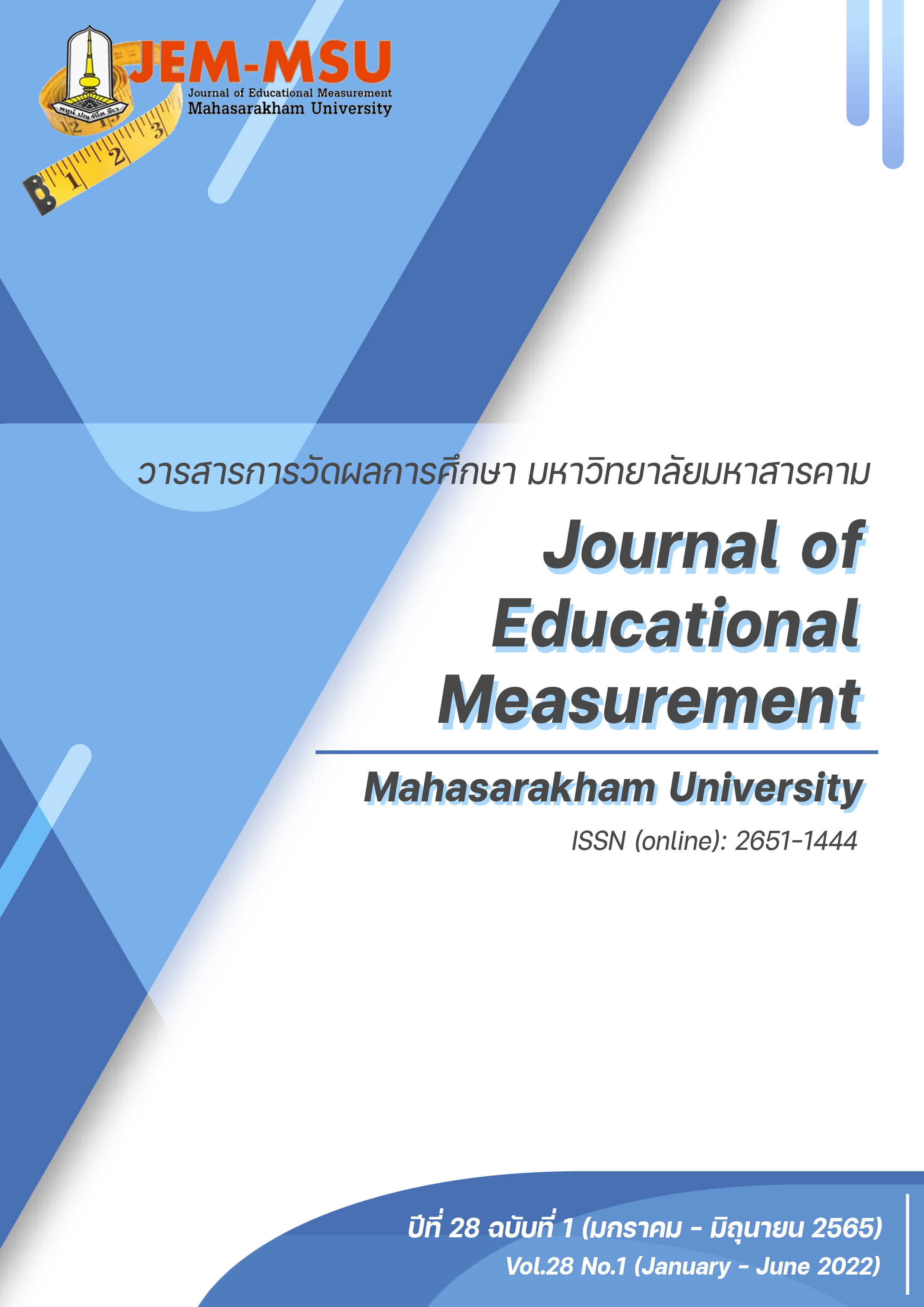Variable-Length Computerized Classification Testing in Psychological Assessment
Main Article Content
Abstract
Variable-Length Computerized Classification Testing (VL-CCT) aims to classify persons into groups. For example, a group of examinees are classified into a depression or non-depression group. VL-CCT is a computerized testing appropriate to be applied in psychological assessment because it is a testing process that examinees are given test items of different numbers or different test lengths, depending on their individual ability. However, at present, VL-CCT has not been used much in psychological testing and assessment, due to its complexity of algorithm and requirement on adequate item bank for the testing process. This article presents the definition, the main components of the VL-CCT development process, as well as a guideline on development of VL-CCT for application in psychological testing, all of which will be beneficial as they will help reduce problems in the traditional paper-pencil testing such as in duration, consumables, and also in human resources which are limited.
Article Details

This work is licensed under a Creative Commons Attribution-NonCommercial-NoDerivatives 4.0 International License.
The content and information contained in the published article in the Journal of Educational Measurement Mahasarakham University represent the opinions and responsibilities of the authors directly. The editorial board of the journal is not necessarily in agreement with or responsible for any of the content.
The articles, data, content, images, etc. that have been published in the Journal of Educational Measurement Mahasarakham University are copyrighted by the journal. If any individual or organization wishes to reproduce or perform any actions involving the entirety or any part of the content, they must obtain written permission from the Journal of Educational Measurement Mahasarakham University.
References
Huebner, A. R., & Fina, A. D. (2015). The stochastically curtailed generalized likelihood ratio: A new termination criterion for variable-length computerized classification tests. Behav Res Methods. 47(2), 549–561. DOI 10.3758/s13428-014-0490-y.
Jiao, H. & Lau, A. C. (2003). The effects of model misfit in computerized classification test. Proceedings of the annual meeting of the National Council of Educational Measurement (pp. 1-26). Chicago.
Lau, C. A., & Wang, T. (1999). Computerized classification testing under practical constraints with a Polytomous Model. The Annual Meeting of the American Educational Research Association (pp. 19-23). Montreal, Canada.
Lin, Chuan-Ju. (2011). Item selection criteria with practical constraints for computerized classification testing. Educational and Psychological Measurement, 71(1), 20–36. DOI: 10.1177/0013164410387336
Lin, C. J. & Spray, J. A. (2000). Effects of item-selection criteria on classification testing with the sequential probability ratio test. ACT Research Report. Iowa City, Iowa: ACT, Inc.
Sie, H., Finkelman, M. D., Riley, B., & Smits, N. (2015). Utilizing response times in computerized classification testing. Applied Psychological Measurement, 39(5), 389-405.
Smiths, N. & Finkelman, M. D. (2013). A Comparison of computerized classification testing and computerized adaptive testing in clinical psychology. Journal of Computerized Adaptive Testing, 1(2), 19-37.
Thompson, N. A. (2006). Variable-length computerized classification testing with Item Response Theory. CLEAR Exam Review, XVII (2), 13-18.
Thompson, N. A. (2007). A Practitioner’s guide for variable-length computerized classification testing. Practical Assessment Research & Evaluation, 12(1). http://pareonline.net/getvn.asp?v=12&n=1
Thompson, N. A., & Ro, S. (2007). Computerized classification testing with composite hypotheses. In D. J. Weiss (Ed.). Proceedings of the 2007 GMAC Conference on Computerized Adaptive Testing. www.psych.umn.edu/psylabs/CATCentral/
Thompson, N. A. (2010 a). Nominal error rates in computerized classification testing, The First Annual Conference of the International Association for Computerized Adaptive Testing. Arnhem, The Netherlands.
Thompson, N. A. (2010 b, September). Advanced methods of designing tests for pass/fail decisions. The 2010 Annual Conference of the Council for Licensure, Enforcement, and Regulation.
Thompson, N. A. (2011). Termination criteria for computerized classification testing. Practical Assessment, Research & Evaluation, 16(4). http://pareonline.net/getvn.asp?v=16&n=4.
Vos, H. (2000). A Bayesian Procedure in the Context of Sequential Mastery Testing. Psicológica, 21, 191-211.
Rungrueng C., Chadcham S., and Pradujprom P. (2018). The Development of Intelligence Mindset Classification Program Using Variable-Length Computerized Testing. Research Methodology & Cognitive Science, 16(1), 53-67. (in Thai)


